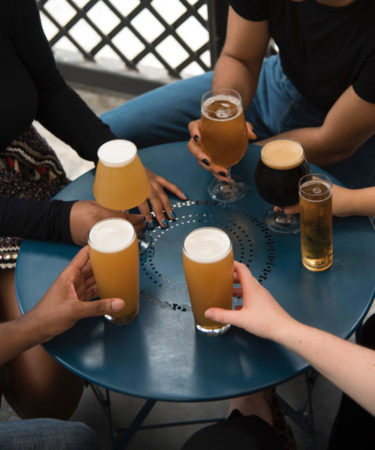According to the Beer Institute, U.S. beer companies shipped close to 165.5 million barrels of beer in 2019, a decline of nearly 1.4 million barrels from 2018. This marks a 0.8 percent decrease in beer shipments from 2018 to 2019, Brewbound reports.
Other beer industry metrics tell different stories, though. For example, as we reported last week, IRI and Nielsen showed off-premise beer sales increased in 2019, and craft beer sales grew 2.8 percent in terms of dollar sales.
The point is, the beer industry’s wins and losses look different depending on how or what you’re counting. In this case, we can see fewer barrels left breweries; but simultaneously, our spend on these barrels of beer increased. This means we’re drinking less, but spending more on the beer we’re buying. If that sounds like you, you’re helping move the industry forward — as long as you’re making purchases consistently, and not doing something silly like testing your willpower to stop drinking beer for a month. Yeah, I’m looking at you, Dry January participants.
Bud Light Hard Seltzer Is Spending More Than Any Other Beer Brand on TV Ads
Anheuser-Busch has reportedly spent more than $24 million on television ads for its recently launched Bud Light Hard Seltzer. The ad blitz kicked off during the National Football League wildcard playoff games on Jan. 4, more than a week before the product’s launch on Jan. 13.
Almost all of the ad spend – $23 million – went to NFL playoffs broadcasts in the two-week span starting Jan. 4. The big spend ate up more than a third of the entire beer industry’s TV ad buys between Jan. 1 and Jan. 19, according to tvrev.com.
This is a sparkling drop in the bucket compared to what we’re likely to face in the coming weeks and the Super Bowl. I just hope whatever the ad team came up with this year is better than mermaids in polo shirts.
San Diego Brewers Guild Sets Sights on Inclusion
In January, the San Diego Brewers Guild launched an Inclusion Committee led by Virginia Morrison, committee chair and CEO and co-founder of Second Chance Beer Company.
As Beth Demmon writes in San Diego Magazine, “conversation without follow-through” is a common pitfall of progressive efforts. In other words, talking about diversity and inclusion (or writing about it) is not the same as doing something about it – which is what the Inclusion Committee plans to remediate.
On the docket so far are “creating a countywide survey to advocate for employee salary transparency, identifying ways to promote inclusion in neighborhoods with few to no breweries, possibly developing an official diversity and inclusion ambassador role within the Guild in the future, and establishing guidelines to provide to breweries who wish to promote diversity in their hiring practices,” Demmon writes.
(Disclosure: Demmon is a VinePair contributor and a member of the San Diego Brewers Guild Inclusion Committee.)
In the beer industry and any other, thinking and talking about necessary changes only gets us so far. Action leads to progress, and with a leading craft beer community like San Diego’s initiating that change, I’m hopeful we can start to see the reshaping of the beer community happening in real time, one inclusive initiative at a time. This is not only something San Diego has to do; as a committee and community, these individuals are setting an example for other beer industry groups, brands, spaces, and cities to follow.
So, who’s next?
This story is a part of VP Pro, our free platform and newsletter for drinks industry professionals, covering wine, beer, liquor, and beyond. Sign up for VP Pro now!
